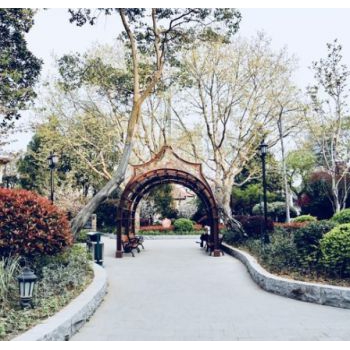QSense耗散型石英晶体微天平ZX文献-2020年第11期
1. Name:Characterization of Nano-layered Solid-Contact Ion Selective Electrodes by Simultaneous Potentiometry and Quartz Crystal Microbalance with Dissipation
Authors:Vida Krikstolaityte, Ruiyu Ding, Tautgirdas Ruzgas, Sebastian Björklund and Grzegorz Lisak
Journal:Analytica Chimica Acta
DOI: 10.1016/j.aca.2020.06.044
Abstract:A nano-layered solid-contact potassium-selective electrodes (K+-ISEs) were explored as model ion-selective electrodes for their practical use in clinical analysis. The ultra-thin ISEs ought to be manufactured in a highly reproducible manner, potentially making them suitable for mass production. Thus their development is pivotal towards miniaturized sensors with simplified conditioning/calibration protocols for a point-of-care diagnostics. To study nano-layered ISEs, the ultra-thin nature of ISEs for the first time enabled to combine potentiometry-quartz crystal microbalance with dissipation (QCM-D) to obtain value-added information on the ISE potentiometric response regarding their physical state such as mass/thickness/viscoelastic properties/structural homogeneity. Specifically, the studies were focused on real-time observations of the ISEs potentiometric response in relation to changes of their physicochemical properties during the ISE preparation (conditioning) and operation (including biofouling conditions) to identify the occurring processes that may accordingly be critical for potential instability of the ISEs, impeding their practical application. The K+-ISEs were prepared on a QCM-D gold sensor by electrodepositing poly(3,4-ethylenedioxythiophene)-poly(styrene sulfonate) layer serving as an ion-to-electron transducer subsequently covered by a spin-coated poly(vinyl chloride) based K+-ion selective membrane (K+-ISM). The studies demonstrated that the performance of the nano-layered design of K+-ISEs is detrimentally affected by such processes as water layer formation accordingly causing the instability of the electrode potential. The changes in the ISE physical state such mass/viscoelastic properties associated with water layer formation and origin of the potential instability was already observed at the ISE conditioning stage. The potential instability of nano-layered ISEs limits their practical applicability, indicating the need of new solutions in designing ISEs, for instance, exploiting new water-resistant materials and modifying preparation protocols.
Link:https://www.sciencedirect.com/science/article/abs/pii/S0003267020306929
2. Name:Transport Behaviors of Colloidal Manganese Dioxide in Aqueous Media: Effects of Ionic Specificity of Monovalent Cations
Authors:Ruixing Huang, Chengxue Ma, Qiang He, Jun Ma, Caihong Liu, Zhengsong Wu and Xiaoliu Huangfu
Journal:The Journal of Physical Chemistry C
DOI: 10.1021/acs.jpcc.0c03022
Abstract:The influence of ionic strength on the transport behaviors of natural or engineered colloids have been widely studied in recent years, and the explanatory classical Derjaguin−Landau−Verwey−Overbeek (DLVO) theory has also been employed in many studies. However, ionic specific effects were barely applied to interpret the contradiction between the experimental observations and classical DLVO theory when nanoparticle aggregation and deposition took place in different monovalent cationic solutions. In this study, the effects of ionic specificity of the first-group monovalent cations (i.e., MNO3, M= Li+, Na+, K+ and Rb+), and the influence of presentative polysaccharide (alginate) and protein (bovine serum albumin (BSA)), on the aggregation and deposition behaviors of colloidal manganese dioxide (MnO2) onto silica (SiO2) and iron (Fe3O4) surfaces were systematically studied. Experimental results indicated that the additive poorly hydrated cation (e.g., Rb+) were more efficient in promoting the aggregation and moreover, hindering the deposition kinetics of colloidal MnO2. An additional short-range repulsion was introduced to modify the DLVO theory, in which a hydration force between colloids and surfaces was considered and modeling calculated for the first time to interpret the nanoparticle deposition behaviors under the effects of ionic specificity. These results revealed the significance of ionic specificity in the aggregation and deposition behaviors of colloids and provided insights in understanding the role of counterion hydration in the transport and fate of colloids in aquatic environment.
Link:https://pubs.acs.org/doi/abs/10.1021/acs.jpcc.0c03022
3. Name:Biomimetic Amyloid-Like Protein/Laponite Nanocomposite Thin Film through Regulating Protein Conformation
Authors:Jian Zhao, Bianliang Miao and Peng Yang
Journal:ACS Applied Materials & Interfaces
DOI: 10.1021/acsami.0c08692
Abstract:The use of natural protein-based thin films has been severely limited due to their relatively low stiffness and strength compared to synthetic polymers. Although the mechanical properties of the protein-based thin films could be enhanced through blending with nanofillers, the fabrication of these materials with nanoscale-to-macroscale hierarchical architecture and robust interfacial adhesion via a facile and green method remains a challenge. Here we prepared robust protein-based organic/inorganic nanocomposite films with a nacre-like microstructure through directly regulating protein conformation in a simple and biocompatible all-aqueous system. These films contain a high concentration of Laponite (Lap) and amyloid-like phase-transited bovine serum albumin (PTB) aggregates rich in β-sheets which could organize Lap nanoplatelets into an intercalated and multistacked structure. In addition, the PTB aggregates present strong mechanical strength, good stability and especially superior bioadhesion to afford strong organic/inorganic interface bonding. The resultant PTB/Lap films exhibit high Young’s modulus and strength, good chemical stability (in both aqueous solution and organic solvent) and flame retardation, while they are also very transparent (maintaining more than 90% transmittance). Moreover, the film could adhere onto various substrates with robust biomimetic interfacial adhesion, and the resultant coating on glass could function as a smart window to cool down the indoor temperature. Because of their excellent performance and high versatility, the amyloid-like protein/clay nanocomposite films are expected to find broad practical applications.
Link:https://pubs.acs.org/doi/abs/10.1021/acsami.0c08692
4. Name:Superhydrophilic versus Normal Polydopamine Coating: A Superior and Robust Platform for Synergistic Antibacterial and Antithrombotic Properties
Authors:Linhua Li, Li Yang, Yanbiao Liao, Hongchi Yu, Zhen Liang, Bo Zhang, Xiaorong Lan, Rifang Luo and Yunbing Wang
Journal:Chemical Engineering Journal
DOI: 10.1016/j.cej.2020.126196
Abstract:Blood-contacting devices including implantation devices, indwelling medical devices, and extracorporeal circuits have been at risk of thrombus and infections, which lead to treatment failure and serious adverse clinical events. In this study, we have reported a facile and robust mussel-inspired superhydrophilic coating for use on these blood-contacting devices to combat thrombosis and infections. The coating was fabricated mainly based on the rapid formation and accumulation of polydopamine (PDA) nanoparticles and in situ-synthesized using silver nanoparticles (Ag NPs) in the presence of sodium periodate. Therefore, the stability and long-term effects of superhydrophilicity were maintained because of the synergetic contribution of hydrophilic chemical components and surface topography of stacked nanoparticles. Different from mostly reported PDA coatings (with the water contact angle > 30 °) that have good affinity to protein adsorption and cause blood coagulation, the superhydrophilic PDA coating in this work effectively reduced the nonspecific adsorption of proteins, maintained the native conformation of the adhered proteins, and further inhibited thrombus formation. Meanwhile, the superhydrophilic surface with Ag+ also demonstrated significant antibacterial properties against both Staphylococcus aureus (Gram-positive bacteria) and Pseudomonas aeruginosa (Gram-negative bacteria). Besides, the embedded Ag+ presented meaningful sustained release with less than 25% released amount even after 30 days incubation, suggesting effective and safe antibacterial ability in a low dose-dependent manner, due to the reduced protein adsorption platform supported killing and releasing of bacteria. Such a superhydrophilic surface-supported low-fouling platform will be proposed as a new strategy for combating thrombotic and infection, especially for blood-contacting devices.
Link:https://www.sciencedirect.com/science/article/abs/pii/S138589472032324X
5. Name:Unraveling How Ethanol-Induced Conformational Changes Affect BSA Protein Adsorption onto Silica Surfaces
Authors: Jia Ying Brenda Tan, Bo Kyeong Yoon, Gamaliel Junren Ma, Tun Naw Sut, Nam-Joon Cho and Joshua A. Jackman
Journal:Langmuir
DOI: 10.1021/acs.langmuir.0c01478
Abstract:Protein adsorption at solid-liquid interfaces is highly relevant to a wide range of applications such as biosensors, drug delivery, and pharmaceuticals. Understanding how protein conformation in bulk solution impacts adsorption behavior is fundamentally important and could also lead to the development of improved protein-based coatings. To date, relevant studies have been conducted in aqueous solutions while it remains largely unknown how organic solvents and more specifically solvent-induced conformational changes might influence protein adsorption. Herein, using the quartz crystal microbalance-dissipation (QCM-D) and localized surface plasmon resonance (LSPR) techniques, we systematically investigated the real-time adsorption behavior of bovine serum albumin (BSA) protein onto silica surfaces in different water-ethanol mixtures ranging from 0 to 60% (v/v) ethanol. The results showed that there was greater protein adsorption at higher ethanol fractions in the 10-30% range, while more complex adsorption profiles were observed in the 40-60% range. The combination of QCM-D and LSPR measurements led us to further identify specific cases in water-ethanol mixtures where washing steps caused densification of the adsorbed protein layer as opposed to typical desorption of weakly adsorbed molecules in aqueous conditions. We discuss mechanistic factors that drive these overall adsorption trends by taking into account how ethanol fraction affects BSA conformation in bulk solution. Together, our findings demonstrate that BSA proteins can adsorb onto silica surfaces across a wide range of water-ethanol mixture conditions while specific adsorption profiles depended on the ethanol fraction in a manner closely linked to solution-phase conformational properties.
Link:https://pubs.acs.org/doi/abs/10.1021/acs.langmuir.0c01478
6. Name:Layer-by-layer coating of polyvinylamine and dopamine-modified hyaluronic acid inhibits the growth of bacteria and tumor cell lines on the surface of materials
Authors:Tuo-Di Zhang, Xudong Deng, Yi-Fan Wang, Xue-Ting Wang, Xi Zhang, Liang-Liang Chen, Xin Cao, Yao-Zhong Zhang, Chen-Yan Zhang, Xing Zheng, Da-Chuan Yin
Journal:Applied Surface Science
DOI: 10.1016/j.apsusc.2020.147197
Abstract:Layer-by-layer (LbL) assembly technique has been proven to be a convenient and eco-friendly method to obtain multifunctional coatings. In this research we presented a hydrophilic and transparent coating on various types of substrates by layer-by-layer deposition of polyvinylamine (PVAm) and dopamine-modified hyaluronic acid (HA-DN). The successfully constructed multilayers on gold surface were monitored by quartz crystal microbalance (QCM). The coating significantly improved the hydrophilicity of glass, stainless steel, gold, and polyvinyl chloride (PVC) surface as compared with the unmodified ones, which can reduce the water contact angle of the substrates by 30% to 45%. The growth of Escherichia coli (E. coli) and Staphylococcus aureus (S. aureus) was significantly inhibited on LbL-coated PVC, and 6 bilayers of coating can achieve nearly 100% suppression of bacterial growth. The coating was with no toxicity to mouse lymphocytes in polystyrene (PS) cell culture plate, while it significantly attenuated the viability of Michigan cancer foundation - 7 cells (MCF7) and human acute monocytic leukemia cell line (THP-1) in vitro. Therefore, this hydrophilic, transparent, antibacterial, biocompatible, and tumor-cell-suppressive coating would have broad potential in biomedical applications.
Link:https://www.sciencedirect.com/science/article/abs/pii/S0169433220319541
7. Name:Understanding the adsorption and potential tear film stability properties of recombinant human lubricin and bovine submaxillary mucins in an in vitro tear film model
Authors: Noelle I.Rabiah, Yasunori Sato, Aadithya Kannan, Wolfgang Kress, Frank Straube and Gerald G.Fuller
Journal:Colloids and Surfaces B: Biointerfaces
DOI: 10.1016/j.colsurfb.2020.111257
Abstract:The wetting and adsorption properties for two glycoproteins, recombinant human lubricin and bovine submaxillary mucins (BSM) were evaluated on hydrophilic and hydrophobic glass dome surfaces in a simplified in vitro tear film model. We show that both recombinant human lubricin (rh-lubricin) and BSM solutions render surfaces hydrophilic and when the fluid films reach 500 nm or less, the fluids resist evaporation-driven breakup through a volumetric flux across the surface, which we believe is due to evaporation-driven solutocapillary flows. rh-Lubricin was able to maintain a wet film without spontaneous breakup for longer periods of time than BSM at lower concentrations, which we attribute to differences in adsorption properties, measured by QCM-D, that result from surface charge and structural differences (confirmed by zeta potential, DLS, and SAXS measurements).
Link:https://www.sciencedirect.com/science/article/abs/pii/S0927776520306135
8. Name:Interfacial and emulsion characterisation of chemically modified polysaccharides through a multiscale approach
Authors: Yue Wei, Yanping Xie, Zhixiang Cai, Yalong Guo, Min Wu, Pengguang Wang, Ruiqi Li and Hongbin Zhang
Journal:Journal of Colloid and Interface Science
DOI: 10.1016/j.jcis.2020.07.048
Abstract:
Hypothesis
The structural modification of natural emulsifiers may greatly impact their interfacial behaviours and bulk properties. The relationship between the microscopic interfacial viscoelasticity and the macroscopic emulsion stability in emulsifiers with different degrees of modification can be clarified using a multiscale approach.
Experiments
A polysaccharide emulsifier of corn fibre gum (CFG) with different octenyl succinate anhydride (OSA) contents was used to obtain a broad variety of interfacial properties. Interfacial adsorption kinetics and viscoelastic responses were measured by combining interfacial shear rheology and quartz crystal microbalance with dissipation monitoring, and the emulsion properties (droplet size and physical stability) at other scales were evaluated.
Findings
Compared with native CFG, esterified CFG formed thick interfacial films with higher elasticity and viscosity, and their corresponding emulsions showed greater stability. There exists a satisfactory correlation between interfacial rheological properties and emulsion stability. However, such a satisfactory correlation can not be established among the degree of esterification of CFG, interfacial viscoelasticity and stability since depletion flocculation might occur in the emulsion stabilized by the OSA-CFG with the highest OSA content, which induced inferior bulk stability but exerted no impact on the measured interfacial properties. We propose that the depletion flocculation is responsible for this imperfection and provide detailed explanations.
Link:https://www.sciencedirect.com/science/article/abs/pii/S0021979720309267
9. Name:Optimization of fluorescence and surface adsorption of citric acid/ethanolamine carbon nanoparticles for subsurface tracers
Authors:Laura Sinclair, Joseph Browna, Daniel May, Bahareh Guilvaiee, Adam Hawkins and Lawrence Cathlesc
Journal:Carbon
DOI: 10.1016/j.carbon.2020.07.024
Abstract:The tunable fluorescence and biocompatibility of fluorescent carbon nanoparticles (FCNs) makes them appealing tracers in geothermal, environmental, and clinical applications. Here, we address FCNs synthesized from reaction and pyrolysis of citric acid and ethanolamine. We examine the fluorescence and the adsorption of these FCNs as critical parameters that influence their use in applications. FCN fluorescence was observed to develop during pyrolysis and measured at pyrolysis temperatures ranging from 190 to 250 °C. Transmission electron microscopy shows that the FCN average diameter of approximately 13 nm is unaffected by pyrolysis temperature. However, pyrolysis temperature strongly affects fluorescence, which peaks at 210 °C. The surface hydrophobicity of the FCNs increases with pyrolysis temperature as measured by retention on reverse phase chromatography. Together, these results suggest that particle surface functionalities provide both fluorescence and hydrophilicity, and that these surface functionalities are destroyed with excessive pyrolysis. To examine their surface adsorption, quartz crystal microbalance measurements demonstrate that pyrolysis temperature increases FCN adsorption on mineral surfaces. Surfaces with greater hydrophobicity show greater FCN adsorption. Adsorption is unaffected by the presence of mono- or divalent ions in solution. This suggests adsorption by hydrophobic interaction for the Fe2O3, SiO2, and AlSiO surfaces studied.
Link:https://www.sciencedirect.com/science/article/abs/pii/S0008622320306849
10. Name:Selective solvent filters for non-aqueous phase liquid separation from water
Authors:Tatianna Marshall, Klaudine M. Estepa, Maria Corradini, Alejandro G. Marangoni, Brent Sleep and Erica Pensini
Journal:Scientific Reports
DOI: 10.1038/s41598-020-68920-4
Abstract:Injectable filters permeable to water but impermeable to non-polar solvents were developed to contain non-aqueous phase liquids (NAPL) in contaminated aquifers, hence protecting downstream receptors during NAPL remediation. Filters were produced by injecting aqueous solutions of 0.01% chitosan, hydroxyethyl cellulose and quaternized hydroxyethyl cellulose into sand columns, followed by rinsing with water. Polymer sorption onto silica was verified using a quartz-crystal microbalance with dissipation monitoring. Fluorescence and gas chromatography mass spectroscopy showed low ppm range concentrations of non-polar solvents (e.g., hexane and toluene) in water eluted from the filters (in the absence of emulsifiers). The contact angles between polymer-coated surfaces and hexane or toluene were > 90°, indicating surface oleophobicity. Organic, polar solvents (e.g. tetrahydrofuran and tetrachloroethylene, TCE) were not separated from water. The contact angles between polymer-coated surfaces and TCE was also > 90°. However, the contact area with polymer coated surfaces was greater for TCE than non-polar solvents, suggesting higher affinity between TCE and the surfaces. Emulsifiers can be used to facilitate NAPL extraction from aquifers. Emulsion separation efficiency depended on the emulsifier used. Emulsions were not separated with classical surfactants (e.g. Tween 20 and oleic acid) or alkaline zein solutions. Partial emulsion separation was achieved with humic acids and zein particles.
Link:https://www.nature.com/articles/s41598-020-68920-4
全部评论(0条)
推荐阅读
-
- 百欧林文献汇编—QSense石英晶体微天平-2023年第7期
- QSense石英晶体微天平最新文献汇编-2023年第7期
-
- 百欧林文献汇编—QSense石英晶体微天平-2023年第3期
- QSense石英晶体微天平最新文献汇编-2023年第3期
-

- 百欧林文献汇编—QSense石英晶体微天平-2023年第2期
- 瑞典百欧林科技有限公司为纳米尺度的表/界面研究和药物研发提供精确稳定的实验仪器及数据分析系统。
①本文由仪器网入驻的作者或注册的会员撰写并发布,观点仅代表作者本人,不代表仪器网立场。若内容侵犯到您的合法权益,请及时告诉,我们立即通知作者,并马上删除。
②凡本网注明"来源:仪器网"的所有作品,版权均属于仪器网,转载时须经本网同意,并请注明仪器网(www.yiqi.com)。
③本网转载并注明来源的作品,目的在于传递更多信息,并不代表本网赞同其观点或证实其内容的真实性,不承担此类作品侵权行为的直接责任及连带责任。其他媒体、网站或个人从本网转载时,必须保留本网注明的作品来源,并自负版权等法律责任。
④若本站内容侵犯到您的合法权益,请及时告诉,我们马上修改或删除。邮箱:hezou_yiqi










参与评论
登录后参与评论